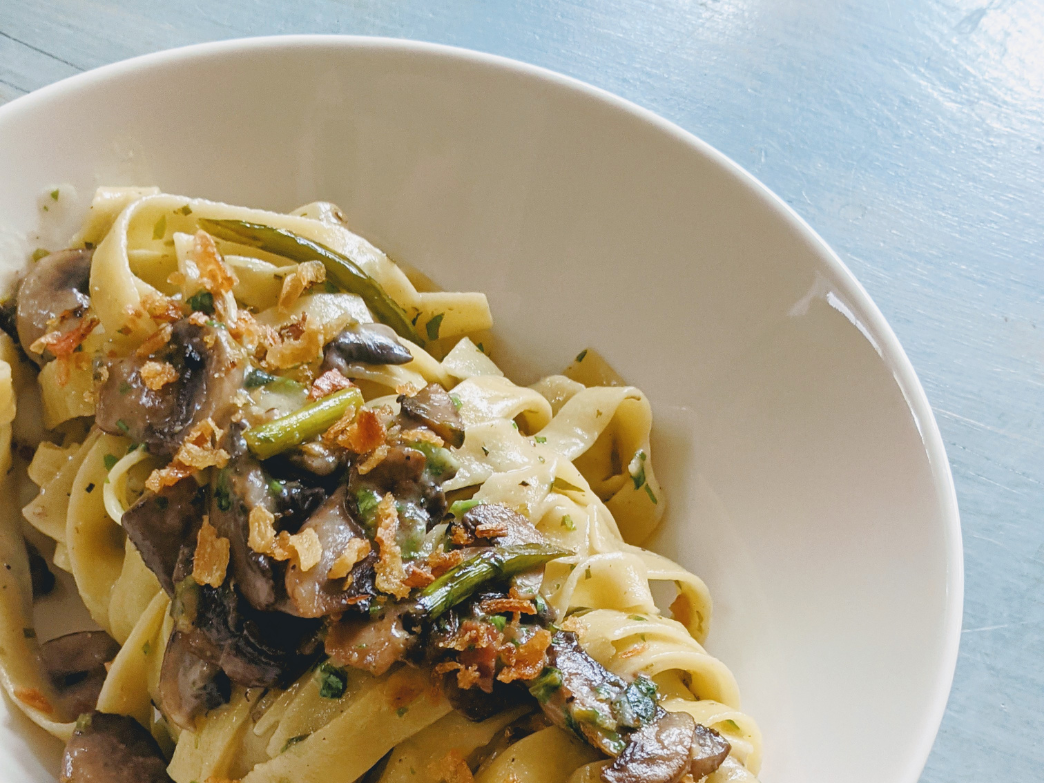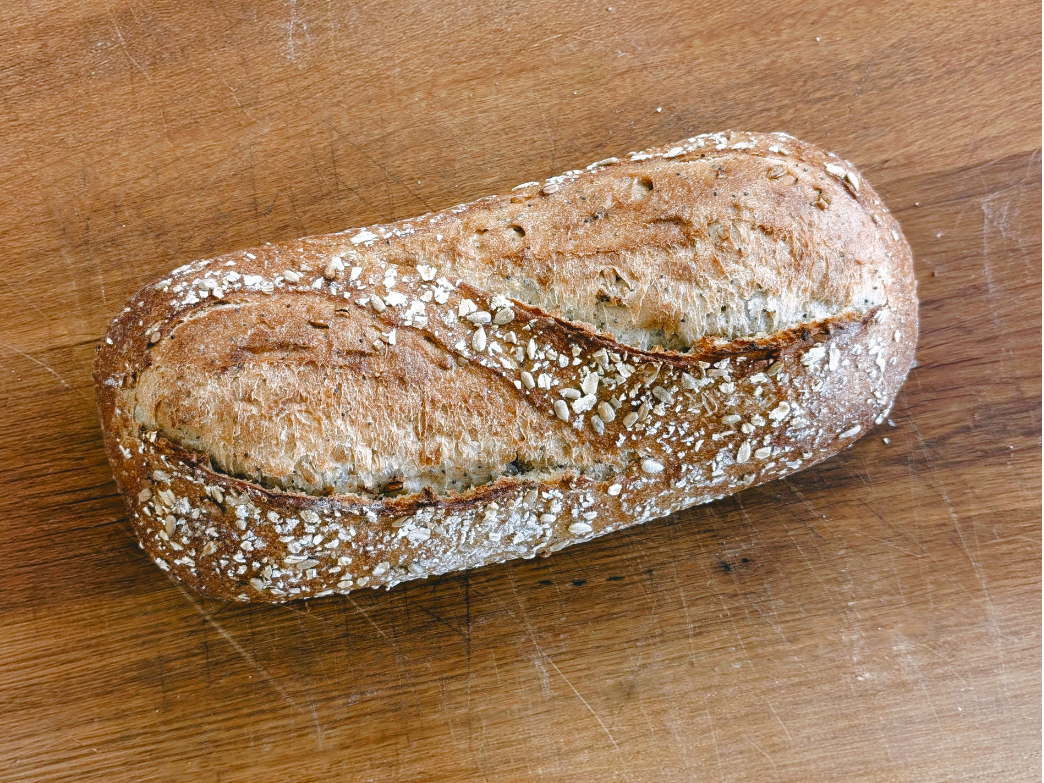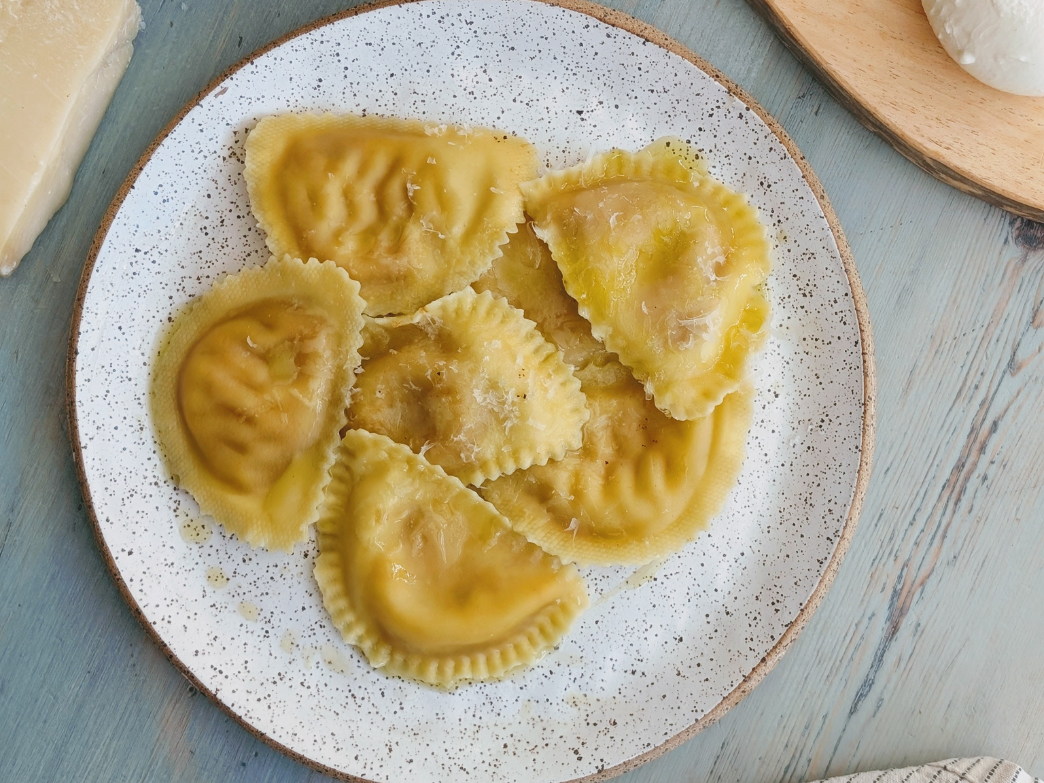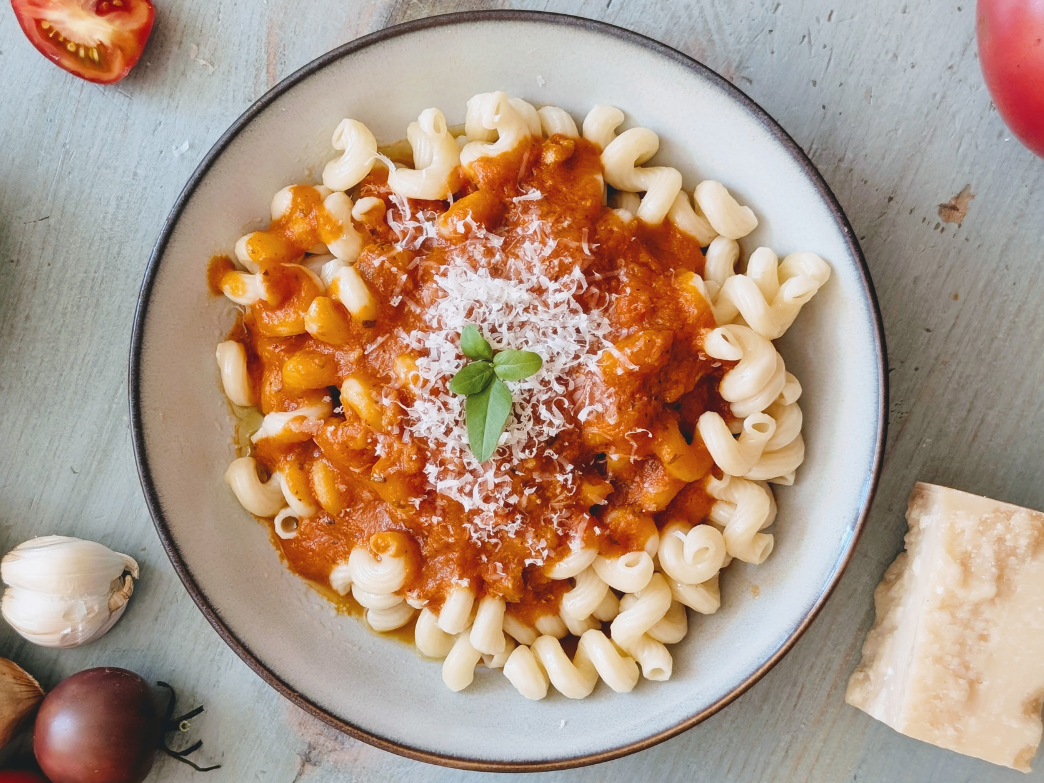By Lucy Yanckello, Ph.D.
Wildgrain, opens in a new tab is the first bake-from-frozen subscription box for sourdough breads, fresh pastas, and artisanal pastries.
In the United States, dried pasta is a pantry staple. As the base of spaghetti and meatballs, mac and cheese, or pasta salad, boxes of various shapes of pasta line the pantries of American consumers. Most people certainly do not have the time to make fresh pasta, so dried pasta is a quick and easy alternative. Just as certain shapes of pasta are better suited for specific dishes, dry, fresh, and frozen pasta all have their place in cooking. Each pasta can be used in any recipe; however, it’s important to consider how flavors and textures will alter the final dish.
What is the difference between fresh pasta vs. dry pasta vs. frozen pasta?
Fresh pasta is made with eggs, flour (most often a type of flour called semolina flour), and water or olive oil. Extra ingredients, such as pureed spinach or spices (e.g. paprika), are sometimes added to color the dough. Fresh pasta dough is kneaded and flattened (either with a rolling pin or a pasta machine) depending on the desired thickness of the pasta. The fresh pasta sheets are then passed through a cutting machine or can be hand cut to create various sizes and shapes. Fresh pasta is perishable, so it must be either cooked immediately or stored in the refrigerator.
Dried pasta is made with water and semolina flour. These ingredients are mixed together, which creates a dough that is crumbly in texture. The dough is then pressed through a machine called an “extruder” that creates the desired shape, like elbows or farfalle. Once pressed into its shape, the pasta is dried for several days in order for the moisture to evaporate. This creates a shelf-stable dried pasta that can last for years.
Frozen pasta is usually used to lock in the flavor of stuffed pastas such as ravioli, lasagna, or tortellini. Frozen pasta can be found in supermarket freezer sections. Frozen pasta can be either frozen fresh pasta or frozen cooked pasta.
What is dried pasta? What is the difference between dried pasta and fresh pasta?
Dried pasta and fresh pasta vary based on ingredients, texture, cooking time, and shelf life.
In terms of ingredients, dried pasta is made with water and semolina flour. Fresh pasta is made with eggs, flour (often semolina flour), and water or olive oil.
The texture of cooked dried pasta is different from the texture of cooked fresh pasta. Dried pasta is typically cooked to a texture known as al dente or “to the tooth” in Italian, giving it a chewy texture that holds up in sauces. Fresh pasta is softer than dried pasta, and as a result cannot be cooked to the al-dente stage. Instead, because fresh pasta has more moisture than dried pasta, the cooked texture of fresh pasta is soft and springy, not “al dente.”
The cooking time of fresh pasta is also different from the cooking time of dried pasta. Fresh pasta cooks much quicker than dried pasta. The absolute cooking time depends on the thickness of the pasta; some thin, fresh pastas can cook in under 2 minutes. Dried pasta cooking time depends on the shape and size of the noodle, with most dried pastas taking anywhere from 8 to 12 minutes.
Dry pasta can last for years if stored in a cool dark place, like a pantry. The drying process removes all the moisture in the pasta, so bacteria and mold cannot grow in the pasta. While dried pasta can last for years, fresh pasta is only good for about 2 to 3 days.
Is frozen pasta as good as fresh pasta?
Frozen pasta can taste just as good as fresh pasta, if handled properly. The best frozen pasta is fresh pasta that is frozen immediately after it is made. If sealed correctly to avoid freezer burn, frozen pasta can last for years. When you are ready to use your frozen pasta, most frozen pastas need to be defrosted for about 24 hours. Frozen pasta from Wildgrain, like our Cheese Tortellini, opens in a new tab and Fresh Fettuccine, opens in a new tab on the other hand, can be cooked directly from the freezer. If properly frozen and stored, there will be little difference between frozen fresh pasta and fresh pasta made that day.
Is frozen fresh pasta better than dried pasta?
Both freezing pasta and drying pasta make storing pasta possible for longer periods of time. The main difference between frozen pasta and dried pasta is the type of pasta typically used for each preservation technique. Frozen pasta is typically used to store stuffed pastas, like ravioli or tortellini. Casseroles made with pasta and cheese, like lasagna, which cannot be preserved by drying, can also be frozen. In contrast, the technique of drying pasta is used when pasta does not contain fillings or toppings. When properly stored and prepared, frozen fresh pasta is not necessarily better than dried pasta.
Can you freeze fresh pasta? What is the best way to store fresh pasta, freeze pasta, or dry pasta?
Yes, fresh pasta can be frozen, and there’s only a few steps needed to freeze pasta at home. First, leave the fresh pasta on a baking sheet to air dry after it is cut; this is to prevent pasta from sticking to itself. Once the pasta has dried slightly, transfer it to airtight containers or bags and remove any excess air before placing in the freezer. Fresh pasta that is frozen at home can be stored in the freezer for around 8 months.
Another way to make your fresh pasta last more than a couple days is to dry it. In order to dry fresh pasta, leave the pasta out for around 12 to 24 hours in a dry, sunny environment. Once the fresh pasta is dried, the dried pasta will last in an airtight container for around 2 to 6 months, as long as it’s not exposed to extreme temperatures.
Because of the longer shelf life, it is best to store fresh pasta by freezing instead of drying fresh pasta if you’re deciding which method to use at home. However, fresh pastas like ravioli and tortellini can only be stored by freezing and cannot be dried.
What is the best pasta: fresh pasta or dry pasta or frozen pasta or store-bought pasta or homemade pasta?
Pasta has versatility not only in its shape but also in how it can be prepared, stored, and cooked. Because pasta has so few ingredients, there are only a few differences between fresh, dry, homemade, and store-bought pasta.
Homemade pasta can be modified in a way that store-bought pasta, dry pasta, and frozen pasta cannot. In homemade pasta, eggs can be added or removed (for example, if you are a vegan), flour can be substituted (e.g. whole wheat or gluten free), and other ingredients can be added such as spinach or spices to color and flavor the dough. However, because grocery stores carry just about everything under the sun, if you don’t have time to make your own pasta, any of these modifications can likely be found in store-bought pastas.
Dry and fresh pasta also serve different purposes in cooking. Dry pasta goes better with richer, heartier sauces because it can be cooked al dente. This extra texture allows dry pasta to hold up better to these types of sauces. Additionally, dry pasta is better for dishes such as lasagnes, casseroles, and soups because it can withstand the long cooking time. Fresh pasta does best with sauces that are more delicate, such as carbonara, marinara, or pesto. Fresh pasta doesn’t stand up well in baked recipes or meals that will have leftovers because it turns gummy when reheated. That being said, in most recipes, fresh pasta can be substituted for dry pasta and vice versa.
Want to try fresh pasta at home without the work?
At Wildgrain, opens in a new tab, we specialize in making high quality, fresh pastas that are then delivered directly to your door. Wildgrain is the first bake-from-frozen delivery subscription service for breads, pastries and fresh pastas. Some of our popular pastas include cheese tortellini, opens in a new tab, fresh fettuccine, opens in a new tab, and fresh tonnarelli, opens in a new tab. Learn more about Wildgrain, opens in a new tab and our artisanal baking and cooking methods.
About the Author
Lucy Yanckello received her Ph.D. in nutrition from the University of Kentucky College of Medicine. She currently works as a medical writer and enjoys being able to help people better understand nutrition and science.
This content is for informational use only and does not replace professional nutrition and/or medical advice, diagnosis or treatment. It is not a substitute for and should not be relied upon for specific nutrition and/or medical recommendations. Please talk with your doctor about any questions or concerns.



